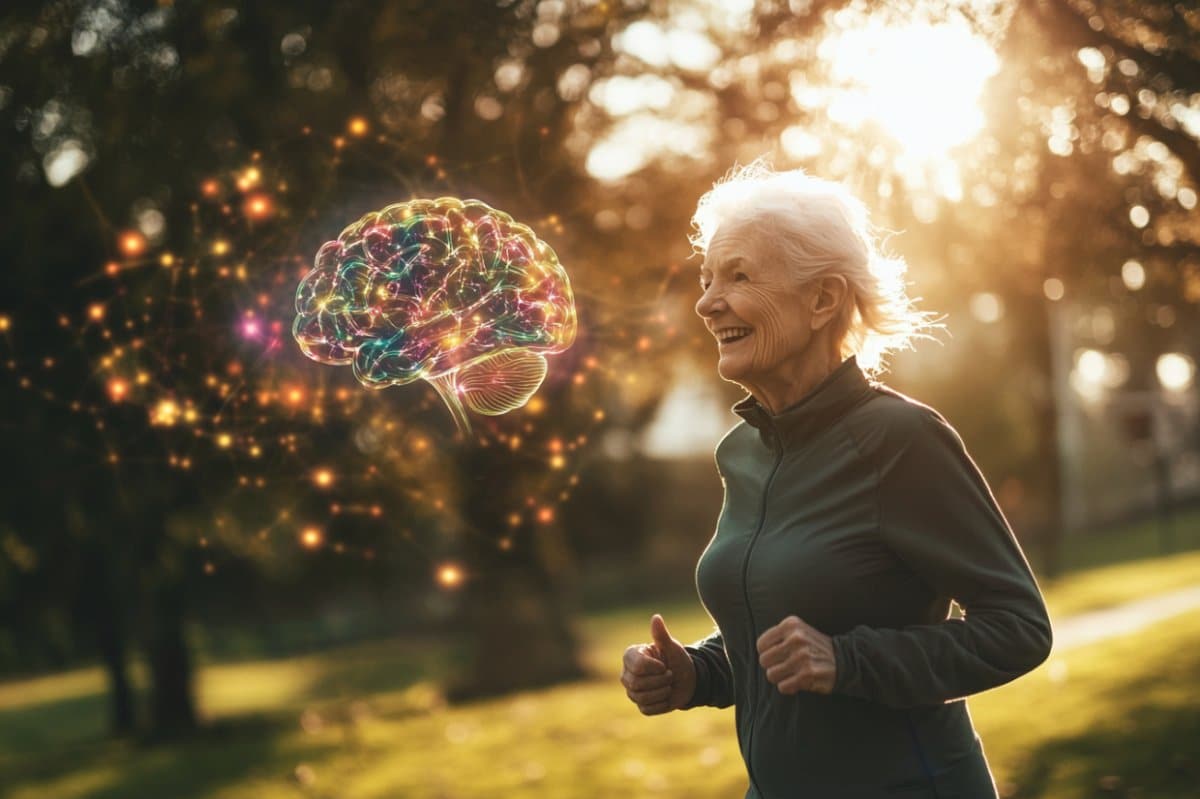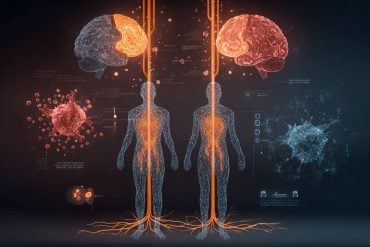Summary: New research shows that even small amounts of high-intensity physical activity can significantly benefit brain health and reduce dementia risk. The study highlights how endurance training and fitness influence inflammation, blood flow, and brain plasticity—key factors in cognitive decline.
Notably, short bouts of brisk activity, like walking too fast to sing, can lower dementia risk by up to 40%. Researchers stress it’s never too late to start, urging health guidelines to reflect the brain-boosting power of microtraining.
Key Facts:
- High-Intensity, Low-Dose: Even small doses of vigorous exercise can protect the brain.
- Dementia Risk: Short bursts of intense activity may reduce dementia risk by up to 40%.
- Biological Benefits: Exercise boosts blood flow, reduces inflammation, and enhances brain plasticity.
Source: NTNU
The news that even small amounts of physical activity can provide major health benefits received a lot of attention in Norway when NTNU researchers Ulrik Wisløff and Atefe R. Tari published their book “Microtraining – 7 weeks to boost fitness and strength” in January this year.
Now the same researchers have looked at the connection between physical activity, or being in good physical shape, and brain health.

This research was conducted with colleagues from the Queensland Brain Institute in Australia.
Promising measures
The study, which has been published in the British medical journal The Lancet, shows that the brain definitely benefits from physical activity.
Even small amounts of high intensity exercise have an effect on the brain. This should be communicated more clearly – it may be what motivates people to get started.
Endurance training and good fitness can reduce the risk of dementia and promote healthy brain aging.
” And it is never too late to start,” says Atefe R. Tari, the study’s first author.
Even small amounts of physical activity may be enough to protect the aging brain, the researchers concluded.
“We summarize research that clearly indicates that exercise is not only important for the heart, but also for the brain. Physical activity appears to be one of the most promising measures we have to prevent cognitive decline and dementia,” Tari said.
Slows down aging processes
The article evaluated evidence from both animal and human studies, and shows how physical activity affects inflammation, blood flow, immune function, brain plasticity and the release of protective molecules in the blood – processes that weaken with age and contribute to the development of neurodegenerative diseases.
“These are mechanisms that play an important role in the development of dementia and cognitive decline,” Tari said.
Tari and Wisløff are researchers at the Cardiac Exercise Research Group (CERG) at NTNU, and have previously promoted the idea that microtraining – going from no activity to incorporating small doses of pulse training into everyday life – be included in the recommendations from Norwegian health authorities.
Today, the recommendation is at least 150 minutes of moderate or 75 minutes of high intensity per week.
“Fully 50 to 70 per cent of the population does not manage today’s activity recommendations, Wisløff said.
Small doses – high intensity
The researchers point out that exercising much less than what the current recommendations recommend can provide great benefits – as long as the intensity of the training is high.
Tari and Wisløff believe that this new study makes it even more important to get the message out.
“We believe it’s time for health authorities to provide clearer advice on how important exercise is for the brain. Our review shows that even small doses of high-intensity activity – equivalent to brisk walking where you can’t sing – can reduce the risk of dementia by up to 40 per cent,” Wisløff said.
Never too late to start
International research supports the NTNU researchers’ findings. In a commentary in Nature Medicine in January, American researchers argued that public guidelines need to be updated. Even small doses of physical activity provide health benefits.
“Today’s recommendations emphasize total activity, but we show that even small amounts of high intensity exercise have an effect on the brain.
“This should be communicated more clearly – it may be what motivates people to get started. A little is better than nothing – and it’s never too late to start,” says Tari.
As life expectancy increases, cognitive decline and dementia are becoming a major public health challenge. Since there is still no cure, prevention is crucial.
“Exercise is cheap, accessible and has no side effects. It should be considered a first-line measure to preserve brain health,” Tari said.
About this exercise and brain aging research news
Author: Ingebjørg Hestvik
Source: NTNU
Contact: Ingebjørg Hestvik – NTNU
Image: The image is credited to Neuroscience News
Original Research: Closed access.
“Neuroprotective mechanisms of exercise and the importance of fitness for healthy brain ageing” by Atefe R. Tari et al. The Lancet
Abstract
Neuroprotective mechanisms of exercise and the importance of fitness for healthy brain ageing
Ageing is a scientifically fascinating and complex biological occurrence characterised by morphological and functional changes due to accumulated molecular and cellular damage impairing tissue and organ function.
Ageing is often accompanied by cognitive decline but is also the biggest known risk factor for Alzheimer’s disease, the most common form of dementia.
Emerging evidence suggests that sedentary and unhealthy lifestyles accelerate brain ageing, while regular physical activity, high cardiorespiratory fitness (CRF), or a combination of both, can mitigate cognitive impairment and reduce dementia risk.
The purpose of this Review is to explore the neuroprotective mechanisms of endurance exercise and highlight the importance of CRF in promoting healthy brain ageing.
Key findings show how CRF mediates the neuroprotective effects of exercise via mechanisms such as improved cerebral blood flow, reduced inflammation, and enhanced neuroplasticity.
We summarise evidence supporting the integration of endurance exercise that enhances CRF into public health initiatives as a preventive measure against age-related cognitive decline.
Additionally, we address important challenges such as lack of long-term studies with harmonised study designs across preclinical and clinical settings, employing carefully controlled and repeatable exercise protocols, and outline directions for future research.






